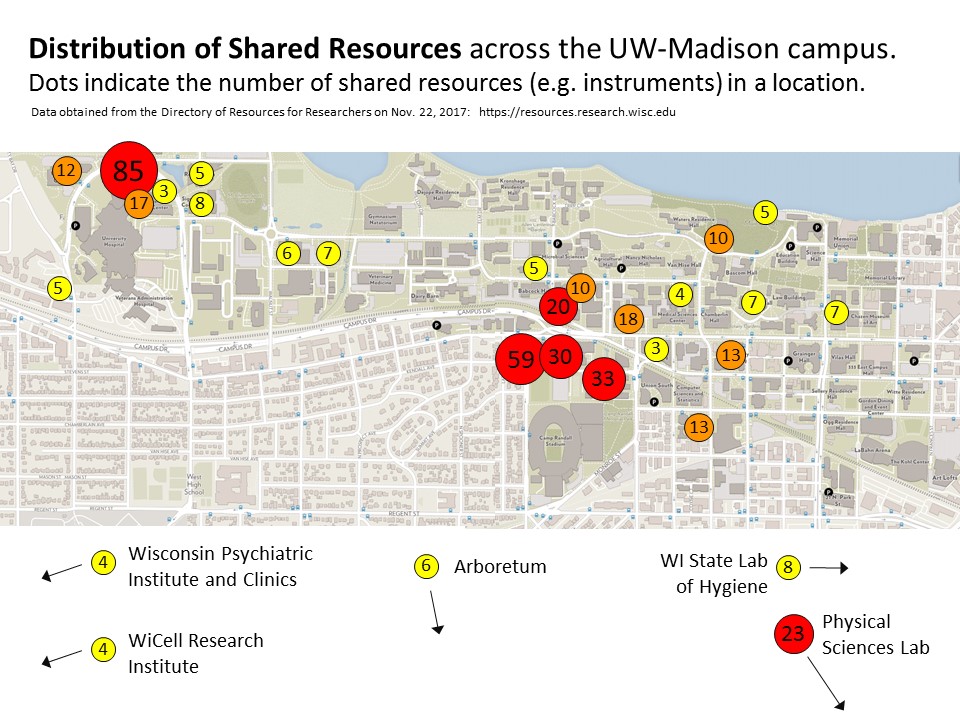Research Cores
Introduction
The Office of Campus Research Cores is an initiative from the Office of the Vice Chancellor for Research (OVCR) to enhance access to and support of research services at UW–Madison. The creation of the Office follows the recommendations of a cross-campus Working Group and parallels programs at peer institutions seeking to maximize resource value in the face of increasing competition for funding. The mission of the Office of Campus Research Cores is to support, coordinate, and optimize core structure and services for campus researchers and external clients.
Read about the increasingly important role of core facilities for collaborative research in: Institutional core facilities: prerequisites for breakthroughs in the life sciences (Meder at al., 2016).
Research Cores Directory: a directory of resources for researchers
The Office of Campus Research Cores has developed a Research Cores Directory for shared equipment and services, including data for 150+ core units, 700+ shared instruments and resources, and 500+ professional services. Explore shared research cores, resources, and services through Search and Browse functions. Feedback, suggestions for improvement, and recommendations for inclusions are welcome. [https://resources.research.wisc.edu/]
The Directory is accessible for viewing by the campus and public communities. Core leadership can edit directory entries upon signing in with UW NetID. Some resources are only visible to campus; sign in with your UW NetID to include internal listings in search results.

Definition
UW–Madison cores are shared resources which offer a wide range of services dedicated to the support of research. Cores provide access to instruments, technologies, services, training, and expert consultation. Cores typically recover all or a portion of their costs through user fees, although some subsidized core services may be accessible without direct charge to the user. Access to cores is through a fair and transparent process that enhances and expands the collaborative capabilities of the research community. The UW–Madison approach to cores is comprehensive and applies to research services in life sciences, physical sciences, social sciences, and arts and humanities.
Goals
- Readily accessible information on campus cores through a central web portal
- Campus core facilities have the capacity to serve all who need their services
- Defined processes to facilitate local decision making concerning phases of the core life cycle
- Scientific synergies through collaboration
Benefits
- Each core facility is used to its fullest
- Reduced redundancy
- Increased utilization by internal and external users
Financial sustainability
- Cost savings and increased revenue generation
- Best practices in operations, management
- Range of methodologies for subsidization
